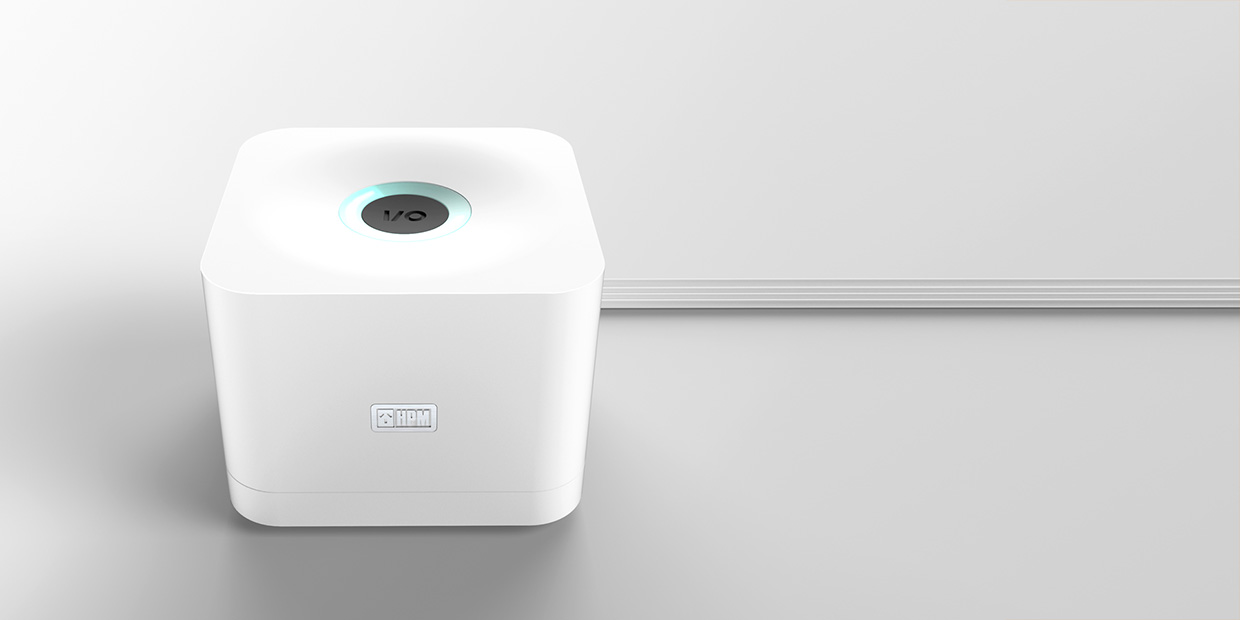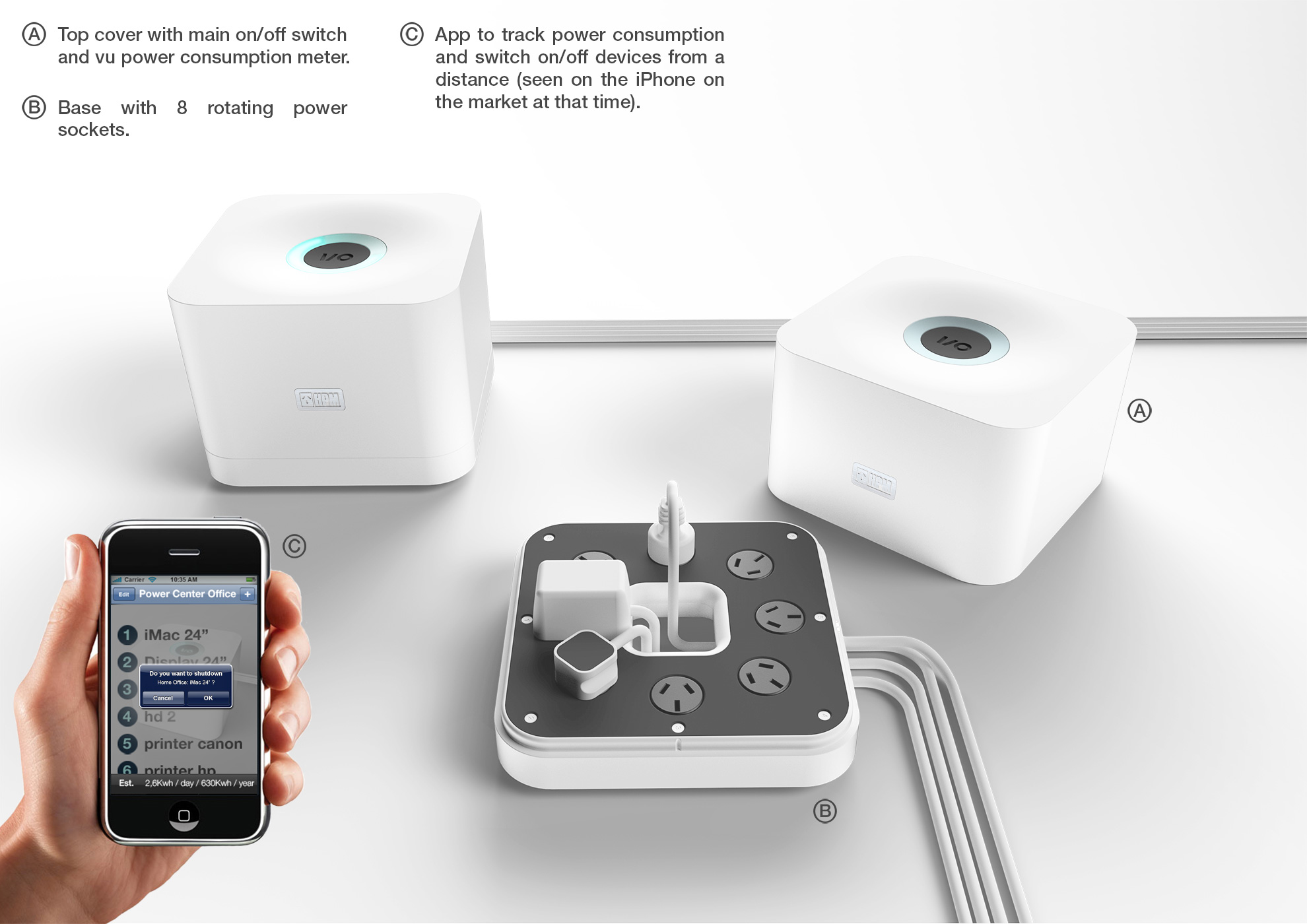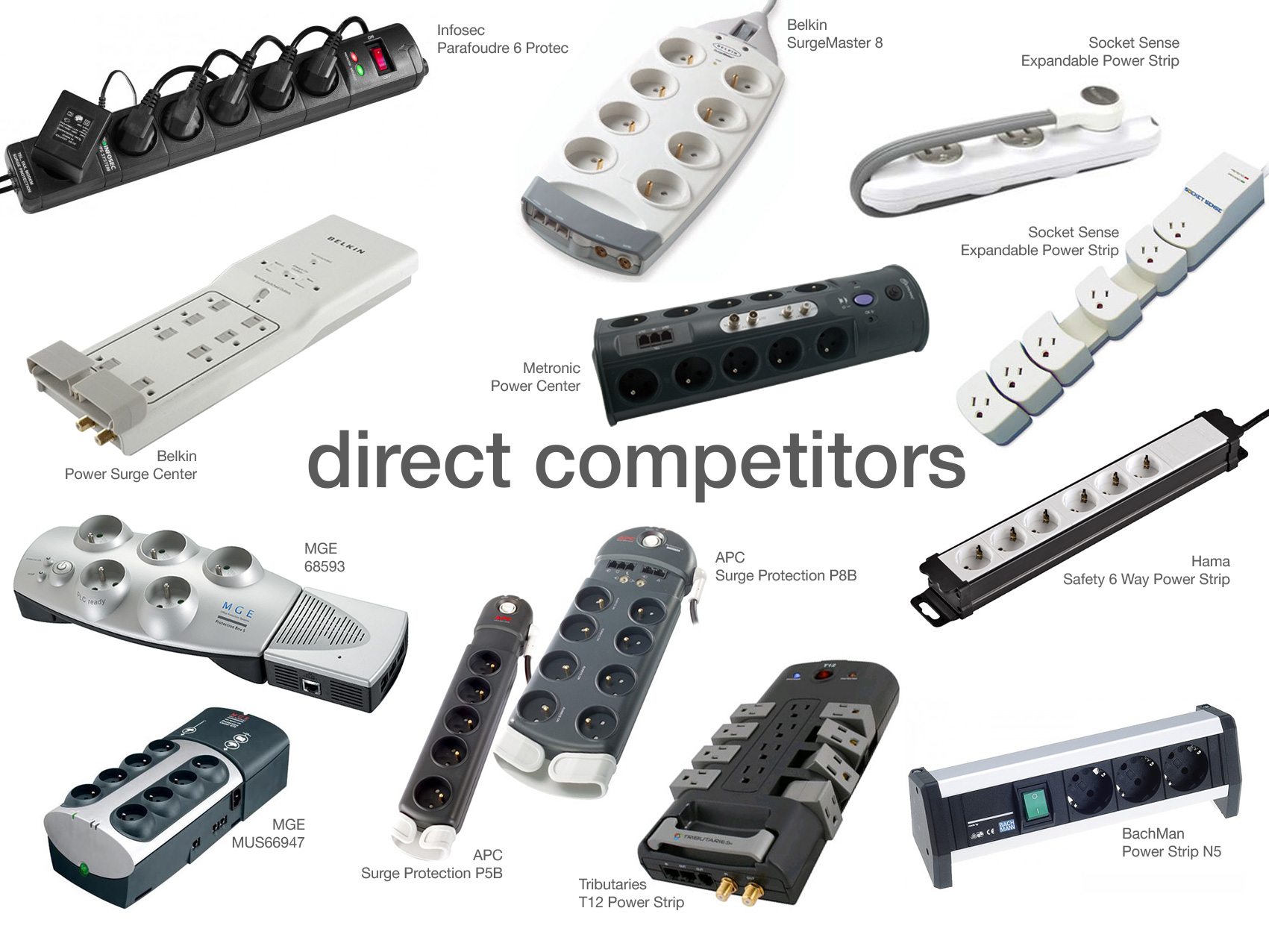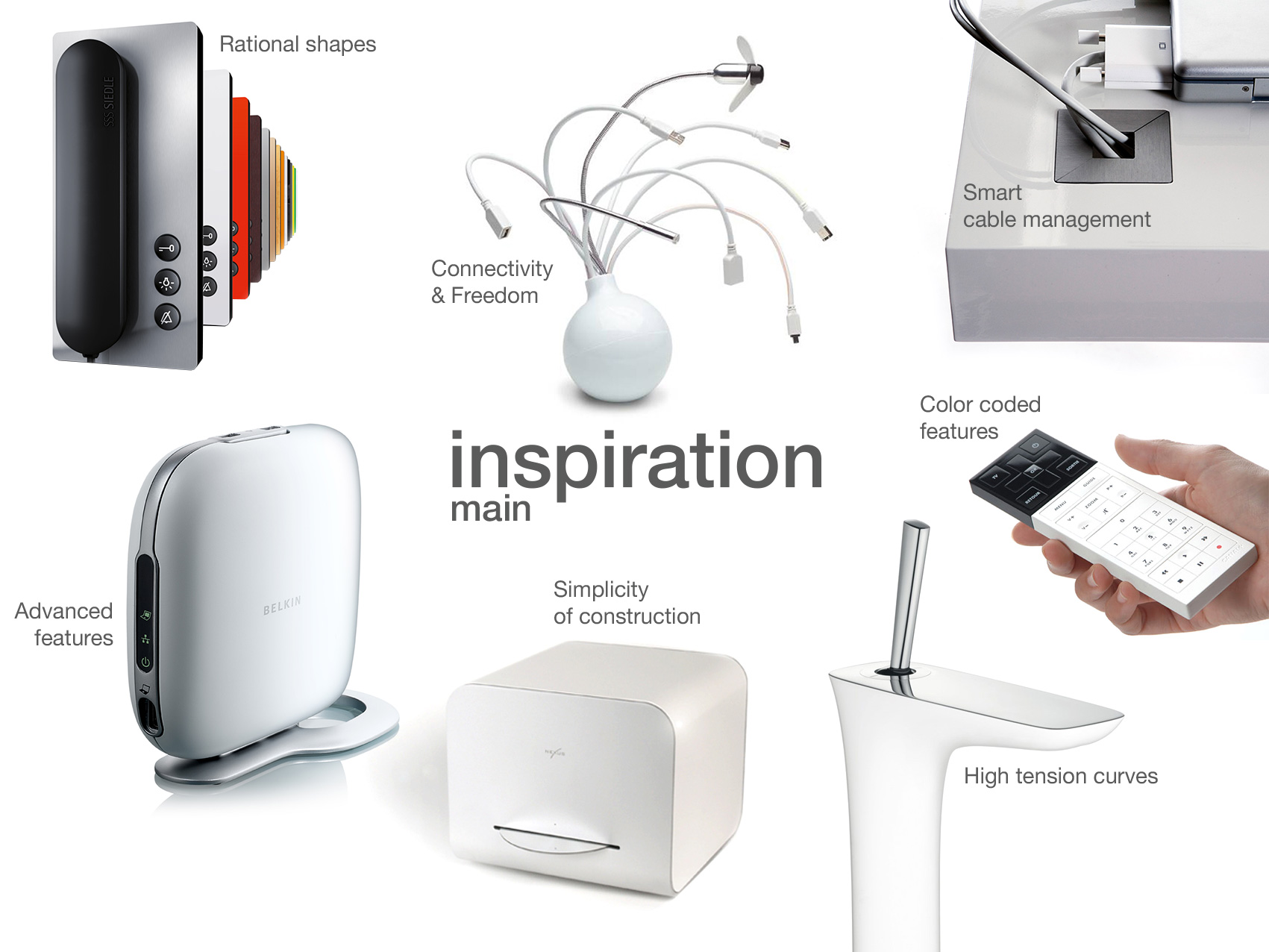HPM-Legrand
Smart power center “Cube” — prospective study
Strengthen HPM-Legrand’s leadership by designing a forward-looking smart power center solution for home and SMEs for 2012 (thus a 4‑year prospective). First consideration, it must be very simple to install, this type of product being as easy to install as a powerboard. Also, we need to think about the management of cables, which are increasingly numerous to power all the electrical devices around us.
Proposal for a real-time display system for the power consumption, readable both on the hood of the device and also on its electrical meter, the information circulating by the current (CPL). The power center also has a WIFI connection to connect to the local network (and to the meter if it is equipped), which allows each one to track the electrical consumption on each device of his choice (computer, mobile phone, PDA etc…), or for the whole power center.
An intelligent ignition system even allows you to turn on or off the connected devices (either by the hood or by an application and WIFI connection). The entire plant can also be stopped or started in the same way, the system checking before the state of the connected devices. For example, if a computer is running and a printer is printing, the system detects it with installed applications and higher power consumption than the standby mode of the device.
In this case, the cube power center cuts the current from the detected devices into standby mode, but wait until the printer has finished printing (by monitoring its power consumption, or if it is connected in wifi, its status), as well as the computer. Once the printer finished, the power center will shut off the printer current and send a computer request to shut down the connected computer before switching off the current.
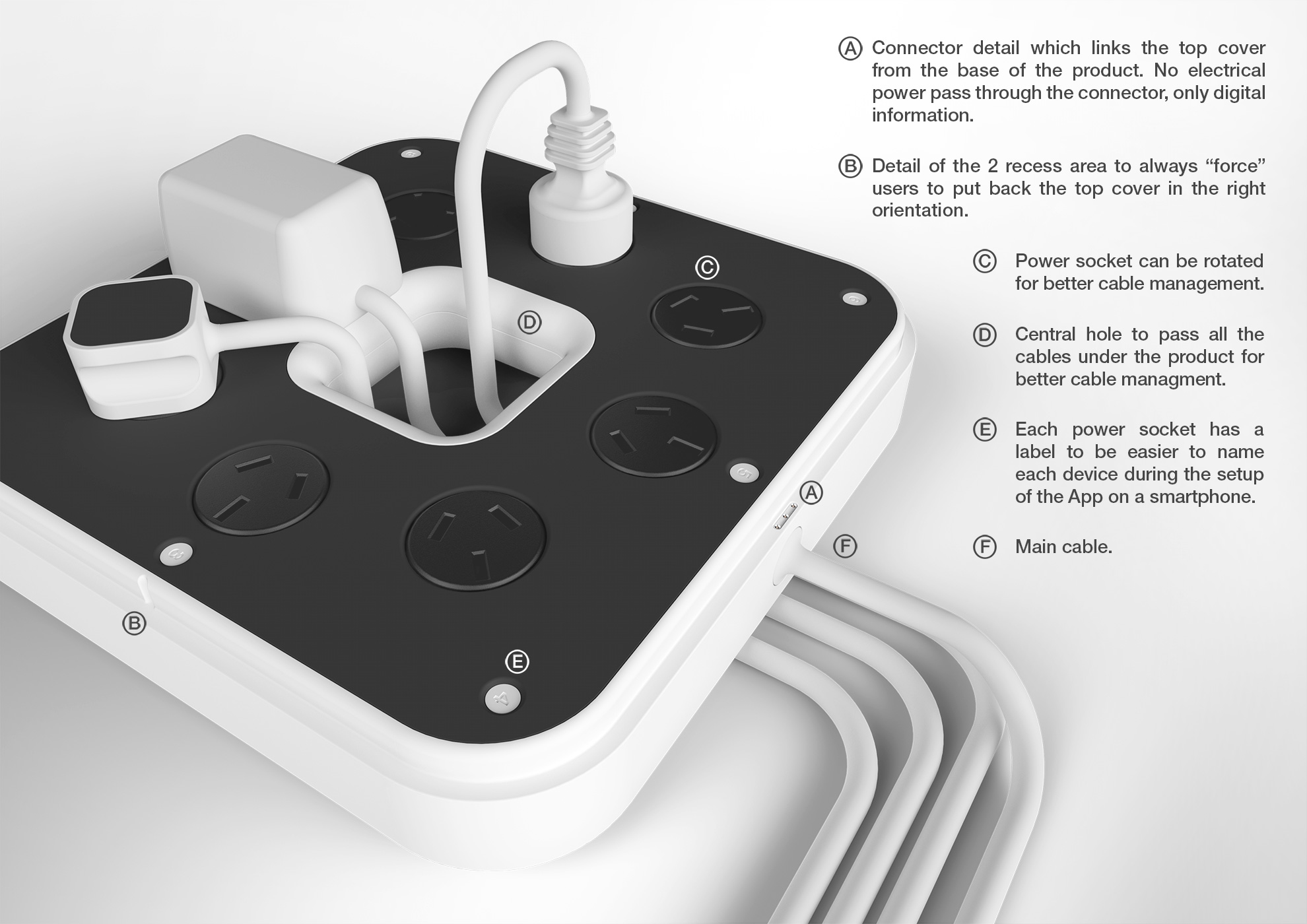
The interest of the system is to be able to manage a small network of power centers very easily, at home or in a company, monitor its power consumption, organize its cables and better manage the start-up and shutdown of its devices, either on site or remotely.
For example, a big storm is coming, you are not home and you have left your computer on, just remotely take control of the power center located in your office and ask for the shutdown of the computer, which will turn off the computer and turn off the power from all the other devices.
A special electrical connection allows the current to be passed from the base to the removable cover. The digital display on the hood even allows you to display the stability and quality of the current delivered to the devices (a message alerting system is of course integrated).
The hood, when closed, rests on a light grey rubber strip to avoid any unpleasant shock or noise when opening or closing the hood. The central hole allows all cables to be assembled in a single outlet (if location and cable length allow it).
Backstage of the project
Competitors’ trend analysis
Most of the home user powerboards offers a surge protection, as well as a main switch. Shapes are globally very geometric (Hama, Infosec, Belkin Power Surge Center). The colours are either black/very dark grey, or white. The underside of the product is always darker than the top (logic, to keep it clean when the product is on the ground). Some like Tributaries or BachMann bring a very technical/industrial style to their product. Belkin has a much simpler approach, almost sensual in its style. Almost all of the plugs (except Belkin Power Surge Center and Socket Sense) have their sockets into recesses. This certainly allows the plugs/transformers to be hold stronger in place, but this makes them in return, very difficult to remove without pulling on the cable (which is dangerous).
Trend positioning
Simple but functional, serious and reassuring forms. A square base capable of accommodating sockets and transfuses of all sizes. A glossy finish and non-slip pads, so that they can be highlighted on a desk rather than at floor level. It is a practical and aesthetic object, a product that we want to show.
